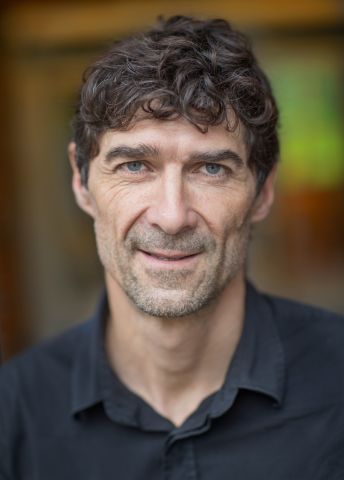
Heiner Linke
Professor of nanophysics
Wallenberg Scholar
Institution:
Lund University
Research field:
Professor of nanophysics
Wallenberg Scholar
Institution:
Lund University
Research field:
Building an autonomous protein motor
Proteins are the building blocks of life. Certain proteins play an important role in converting energy into motion – and can therefore also be described as nature's smallest motors. Learning to build using protein molecules has long been a remote prospect for researchers. Physics professor Heiner Linke recently came one step closer to his goal and as a Wallenberg Scholar he wants to go even further.
To begin with, you might wonder why you would even want to try to imitate nature in this way.
“Nature is clever. We suppose that there is a reason for evolution to have chosen proteins as the main building block of life. We already know that the energy consumption of protein is extremely low, but above all we know that it is possible to build extremely complex organisms using proteins,” says Heiner Linke, Professor of Nanophysics at the Faculty of Engineering (LTH), Lund University.
“If we can learn to design and build with proteins, we can dream of complex nanotechnology that would also be much more sustainable than current nanotechnology.”
At the moment, however, all research in the field of protein motors is basic research with no direct aim of practical utilisation.
The world's first artificial motor
The research is making progress, however. At the end of February, Heiner Linke, together with Canadian and Australian colleagues, demonstrated in Nature Communications the world's first artificial motor that creates movement using proteins: a microsphere that moved forward under its own steam thanks to being covered in a layer of proteins, specifically enzymes. Acting like a lawnmower, as the enzymes cut off another layer of 'grass' molecules on a glass surface, the microsphere rolled forwards. The necessary energy was released when the enzymes cut the 'grass'.
“This motor uses biological proteins found in nature and it requires a large number of proteins to interact.”
Heiner Linke's and his colleagues' major goal is to create a self-propelled protein motor, consisting of a single large molecule that moves with the help of a biochemical fuel.
“Much like the biological engines myosin, found in muscles, and kinesin, which transports neurotransmitters in nerve cells,” says Heiner Linke.
As a Wallenberg Scholar, Heiner Linke wants to devote himself to contributing to the design of an autonomous protein motor and molecular experiments to study and optimise it. He also wants to explore protein design as a platform for environmentally-friendly and sustainable nanotechnology.